Love them or hate them – ETFs are probably the best thing to happen to investing since the invention of stocks itself.
For beginner investors, it allows you to own a basket of stocks and broadly track market performance.
For sophisticated investors, it allows you to make tactical bets on macro trends, and easily move 6-7 figure sums in and out of a macro trade at the press of a button.
As an investor in Singapore today, there’s no getting away from ETFs.
And in this article, I wanted to cover the Best ETFs to Invest in Singapore – the ETFs that every investor in Singapore needs to know about.
Summary: Best ETFs to Invest in Singapore (for Singapore Investors)
- All World Index Fund ETFs
- All World Stock Market Index ETF – VWRA
- Developed Market Stock Market Index ETF – SPDW or IWDA (Irish Domicile)
- Emerging Market Stock Market Index ETF – EIMI
- USA
- General US exposure, S&P500 – VOO or CSPX (Irish Domicile)
- Pure Tech exposure, Technology – NASDAQ (QQQ) or Tech (VGT)
- Small Cap US exposure, Russell 2000 – IWM
- China
- Broad China exposure – MCHI or 2801
- Pure China tech exposure
- KraneShares CSI China Internet ETF (KWEB) or
- Hang Seng Tech (3067)
- Singapore
- General Singapore Exposure, STI ETF – ES3
- Bond ETF – A35
- REIT ETF – Lion Phillip S-REIT ETF (CLR) – or Syfe REIT
- Specialised ETF
- Gold – GLD
- Bitcoin – BITO
- Europe – VGK
- Thematic ETFs
Note: This post is sponsored by Syfe.
You can use Syfe Select to easily dollar cost average into a basket of ETFs at low fees.
All views and opinions expressed in this post are from Financial Horse.
How to Evaluate ETFs
The key things to look out for when picking an ETF are:
- Asset Allocation
- AUM
- Fees (Expense Ratio)
- Tracking Error
- Domicile
Asset Allocation
What is the distribution of assets for the ETF?
Does the ETF achieve your goal?
For example if you want to invest in US Tech specifically, then you need to use an ETF that tracks the NASDAQ, and not the S&P500 or the Russell 2000.
Assets Under Management (AUM)
AUM or Assets under management is the size of the ETF.
The bigger the better.
Bigger ETFs mean better trading liquidity, and almost always have lower fees and lower tracking error due to economies of scale.
Fees (Expense Ratio)
Fees or Expense Ratio is the fee that you pay to the fund manager to run the ETF.
The lower the better.
For the biggest ETFs like VOO which tracks the S&P500, you can get fees of as low as 0.09% which is dirt cheap.
Tracking Error
Tracking Error is the deviation in performance of the ETF, against the underlying index.
The lower, the better.
Most of the ETFs on this list have very low tracking error.
The only exception is the Bitcoin ETF (BITO), because it uses Bitcoin Futures rather than buying Bitcoin directly. This will lead to a large tracking error over time, making it a very inefficient ETF.
Domicile
Domicile refers to where the ETF is located in, for tax purposes.
For Singapore investors, we always almost want to use the Irish domiciled ETFs for superior withholding tax treatment. You can check out my full guide on withholding tax here, but the long and short is that if you hold the S&P500 ETF via Ireland, you pay 15% dividend withholding tax instead of 30%.
This only matters for dividends, so you can ignore it if the ETF is low on dividends.
All World Index Fund ETFs (VWRA, SPDW, IWDA, EIMI)
If you want an ETF to buy and hold for the next 30 years, the All World Index Fund ETFs are your best bet.
There are 3 main ones to use:
- All World Stock Market Index Fund ETF – VWRA
- Developed Market Stock Market Index Fund ETF – IWDA (Irish Domicile) or SPDW
- Emerging Market Stock Market Index Fund ETF – EIMI
All 3 are Irish domiciled so don’t worry about that.
It’s pretty self explanatory, use VWRA if you want something that tracks the whole world.
IWDA if you only want to track Developed Markets.
And EIMI if you want pure Emerging Market Exposure.
The problem with the VWRA is that it predetermines the exposure to Emerging Markets for you, which is on the low side with just 4% allocation to China.
For more sophisticated investors, you may want to buy IWDA and EIMI instead and vary the proportion based on your risk appetite.
I’ve set out the geographic and sector allocations for each below, together with the top 10 holdings:
VWRA – All World Index Fund, Vanguard FTSE All-World UCITS ETF USD Acc (VWRA)
AUM: $12.2b
Expense Ratio: 0.22%
SPDW or IWDA (Irish Domiciled) – Developed Market Index Fund, iShares Core MSCI World UCITS ETF USD (Acc) (IWDA)
AUM: $47b
Expense Ratio: 0.2%
Emerging Market Index Fund – iShares Core MSCI EM IMI UCITS ETF USD Acc (EIMI)
AUM: $18b
Expense Ratio: 0.18%
USA Index Funds / ETFs
Moving over to the United States, the 3 big ETFs are:
- General US exposure, S&P500 – SPY/VOO or CSPX (Irish Domicile)
- Pure Tech exposure – NASDAQ (QQQ) or Tech (VGT)
- Small Cap US exposure, Russell 2000 – IWM
S&P500 (VOO or CSPX)
If you want something to buy and forget, that tracks US generally, the S&P500 is your best bet.
Super liquid, great performance, and tracks the 500 largest companies in the US (which is very international in their earnings).
For Singapore investors, CSPX is probably the more efficient holding vehicle for longer term holdings because of the Irish domicile.
But if you’re just looking to trade, VOO is probably the better bet because the liquidity on the VOO is just nuts, with its $750 billion AUM.
VOO AUM: 750b, Expense Ratio: 0.03%
CSPX AUM: 57b, Expense Ratio: 0.07% (Ireland Domicile)
NASDAQ (QQQ or VGT)
If you want to invest purely in US Tech, then QQQ or VGT are your best bets.
The QQQ tracks the NASDAQ 100, while the VGT tracks tech more generally.
QQQ is by far the larger ETF, so personally that’s what I hold, but it’s ultimately your choice.
QQQ AUM: 898b, Expense Ratio: 0.2%
VGT AUM: 55b, Expense Ratio: 0.1%
Vanguard Information Technology ETF (VGT)
iShares Russell 2000 ETF (IWM)
If you want exposure to the small cap space in the US, then the Russell 2000 is your best bet.
It gives you exposure to 2000 of the small to mid cap stocks in the US.
Personally I like to use the Russell 2000 more for tactical plays rather than long term holdings. Small cap stocks tend to outperform the large cap stocks in the earlier stages of the economy, and underperform in the later stages. So you can set up a pair trade between the IWM and SPY to express such a macro view.
That’s just me though, you can still use the Russell 2000 for long term holdings.
AUM: $73b
Expense Ratio: 0.19%
BTW – we share commentary on Singapore Investments every week, so do join our Telegram Channel (or Telegram Group), Facebook and Instagram to stay up to date!
Don’t forget to sign up for our free weekly newsletter too!
[mc4wp_form id=”173″]
China ETFs / Index Funds
For a full discussion on the best China ETFs to buy for Singapore Investors, do check out our previous article on this.
For today’s article, I’ll keep it simple:
- For broad exposure to China:
- iShares MSCI China ETF (MCHI or 2801)
- For pure China tech exposure
- KraneShares CSI China Internet ETF (KWEB) or
- Hang Seng Tech (3067)
iShares MSCI China ETF (MCHI or 2801)
Broad exposure to China came down to .
Ultimately I settled for 2801, the iShares MSCI China ETF. It gives you exposure to both the onshore A shares (listed in China), and the offshore H shares (Hong Kong) and ADRs (US listed American Depository Receipts).
You pay for this though, with a hefty expense ratio of 0.61%, but this is usual for any ETF that gives you exposure to onshore A shares.
Exchange: US
AUM: $6 billion
Expense Ratio: 0.61%
KraneShares CSI China Internet ETF (KWEB)
If you want pure China tech exposure, KWEB is probably your best bet.
If you want something with lower fees, the Hang Seng Tech ETF is worth checking out too, with 0.25% fees (versus 0.73% for KWEB).
The problem with the Hang Seng ETF is that AUM is much smaller, and for now not all the China tech companies are listed there.
This will change over time though, so if you’re forward looking you can buy the Hang Seng Tech ETF and hold it for 10 years, and let the Index recalibrate itself.
Exchange: US
Expense Ratio: 0.73%
AUM: $5 billion
iShares Hang Seng TECH ETF (3067)
Exchange: Hong Kong (HKEX)
Expense Ratio: 0.25%
AUM: $1 billion
Singapore ETFs / Index Funds
The biggest problem with the Singapore ETFs is that trading liquidity is very low, and AUM is very small.
This translates into high fees, high bid-ask spreads when you buy/sell, and just all round an inefficient ETF.
I’ve tried to select the “bigger” ETFs to avoid this problem, but frankly anything outside of the STI ETF will face liquidity issues in Singapore.
- General Singapore Exposure, STI ETF – ES3
- Bond ETF – A35
- REIT ETF – – or Syfe REIT
STI ETF (ES3)
Probably the only real ETF in Singapore.
The STI ETF tracks the 30 largest stocks listed in Singapore.
AUM at $37 billion is acceptable, and expense ratio at 0.3% is not great, but ok for the Singapore market.
As you can see from the top 10 holdings, the 3 banks (DBS, UOB, OCBC) make up 46% of the index.
For more sophisticated investors, you can just buy the 3 banks, a couple of REITs, and you already replicate a big chunk of the STI’s exposure.
So it really depends on what you’re looking for.
AUM: $37b
Expense Ratio: 0.3%
ABF Singapore Bond Index Fund (A35)
The Singapore Bond Index Fund holds a basket of government bonds, and yields about a 2.6% return longer term (very close to CPF-OA).
The 1 billion AUM means that trading liquidity is poor, so don’t expect to be able to buy/sell large amounts quickly or efficiently.
This ABF Bond Index Fund to me is probably more for sophisticated investors or high net worth individuals who need to park large amounts of cash somewhere and generate yield safely.
AUM: $1b
Expense Ratio: 0.2%
Lion Phillip S-REIT ETF (CLR)
REIT ETFs have even worse liquidity.
The Lion Phillip S-REIT ETF made this list because I wanted to include at least one ETF, but the $225 million AUM with a 0.5% expense ratio is just daylight robbery to me.
It works, but trading liquidity is very poor, and fees are very high at 0.5%.
AUM: $225m
Expense Ratio: 0.5%
If you want to invest in a REIT ETF, I actually think Syfe REIT+ is a better bet.
As long as you invest more than $20,000 with them, you get fees of 0.5% all in, which covers brokerage fees as well as dividend reinvestments. This makes it quite efficient for dollar cost averaging.
Customers who invest more than $20,000 can also choose to have their dividends paid out quarterly to their bank accounts.
And because Syfe REIT+ invests directly in the underlying REITs, you don’t need to worry about trading liquidity from the REIT ETF.
It tracks the iEdge S-REIT Leaders Index, so you get exposure to 20 of the largest REITs in Singapore like Ascendas REIT, Capitaland Integrated Commercial Trust, Mapletree Commercial Trust etc.
Top 10 holdings within Syfe REIT+
The dividend yield in 2020 was 4.5%, and Syfe forecasts the yield for 2021 to be 5.1%.
More Specialised ETFs or Index Funds for Singapore Investors
Now the list of ETFs above should cover almost all your needs if you’re just starting out in investing.
You can probably go up to a million liquid just using the ETFs above, perfectly fine.
Here I wanted to touch on more specialised ETFs, that can be used to express a specific macro view.
SPDR Gold Shares (GLD)
If you want to buy gold but don’t want to bother with storing Physical Gold, GLD is a great ETF.
A $55 billion AUM means liquidity is very strong, and the expense ratio at 0.4% is decent considering they hold the physical gold bullion in a safe.
I know a lot of people think gold is a manipulated market today, and it no longer delivers the returns it used to historically.
I don’t disagree with this, but who knows, things may change down the road.
The biggest issue though, is that the whole point of buying physical gold is to hedge against a total collapse of the financial system. But if that happens and your gold bullion is stuck in a vault in London, how does that really help you? So the true gold fanatics will want a gold bar stored at home, that they can access any time.
AUM: 55b
Expense Ratio: 0.4%
Bitcoin ETF (BITO)
The main problem with the Bitcoin ETF (BITO) is that it uses futures, instead of buying Bitcoin directly.
This makes it incredibly inefficient, so expect to see a big tracking error against underlying Bitcoin.
It’s mainly for institutional investors who cannot buy Bitcoin directly.
If you’re a retail investor, there’s no reason why you should be buying a Bitcoin ETF and absorbing the tracking error.
Just open a CoinHako or FTX account and buy Bitcoin directly. Check out our guide here on the best Crypto Exchanges for a Singapore Investor.
Vanguard FTSE Europe ETF (VGK)
Europe has fallen out of fashion these days which is why it didn’t make the main list.
Some people think that Europe is poised to make a big comeback post-COVID though.
If so, you can check out the Vanguard FTSE Europe ETF. AUM and Expense Ratio are all very good, and in 1 ETF you get broad exposure to the broad European economy.
Good enough in my books.
AUM: $26 billion
Expense Ratio: 0.08%
Thematic ETFs
If you want a more specialised ETF, for example something to track only the US Financial Sector, then there are a whole bunch of ETFs below you can check out:
Syfe Select Custom
If you’re thinking of assembling an ETF portfolio, Syfe Select Custom is a great option to check out.
Most of the ETFs mentioned above such as VWRA, EIMI, CSPX, QQQ, MCHI, VGK, GLD and a wide range of thematic ETFs can be found on the Syfe Select platform.
Some of the thematic ETFs available on Syfe Select
All in all, there are over 100 ETFs you can invest in. You can have up to 8 ETFs in any portfolio, and as many portfolios as you want. With full control over the asset allocation within the portfolio.
So you can set up a portfolio with a 50% allocation to US, 30% allocation to China, and 20% allocation to Europe.
And Syfe will automatically dollar cost average for you, every month. You just set up a recurring transfer through your bank to transfer funds to your Syfe Select portfolio each month.
Syfe reviews the ETFs continually too, so the list will be refreshed with new ETFs over time, just like they did in October 2021.
Very easy, and very convenient.
Whether you’re using Syfe Select or Syfe REIT+, the same low fees apply across all their investment portfolios. In fact, if you have $500,000 invested in Syfe, you become their Private Wealth client and pay fees of 0.35% per year plus other perks.
You can check out more in our full review of Syfe Select Custom.
Syfe Promo Code
For new Syfe clients, don’t forget to use the Syfe Promo Code.
The code is: “FHWAIVER” and you will get SGD $30,000 managed FREE for 3 months.
Closing Thoughts: Best ETFs to Invest in Singapore (for Singapore Investors)
And there you have it!
The best ETFs to invest in Singapore, for Singapore investors in 2021 or 2022.
Love to hear what you think! Any great ones that I missed?
- All World Index Fund ETFs
- All World Stock Market Index ETF – VWRA
- Developed Market Stock Market Index ETF – IWDA
- Emerging Market Stock Market Index ETF – EIMI
- USA
- General US exposure, S&P500 – SPY or CSPX (Irish Domicile)
- Pure Tech exposure, Technology – NASDAQ (QQQ) or Tech (VGT)
- Small Cap US exposure, Russell 2000 – IWM
- China
- Broad China exposure – MCHI or 2801
- Pure China tech exposure
- KraneShares CSI China Internet ETF (KWEB) or
- Hang Seng Tech (3067)
- Singapore
- General Singapore Exposure, STI ETF – ES3
- Bond ETF – A35
- REIT ETF – Lion Phillip S-REIT ETF (CLR) – or Syfe REIT
- Specialised ETF
- Gold – GLD
- Bitcoin – BITO
- Europe – VGK
- Thematic ETFs
Note: This post is sponsored by Syfe. All views and opinions expressed in this post are from Financial Horse.
This advertisement has not been reviewed by the Monetary Authority of Singapore.

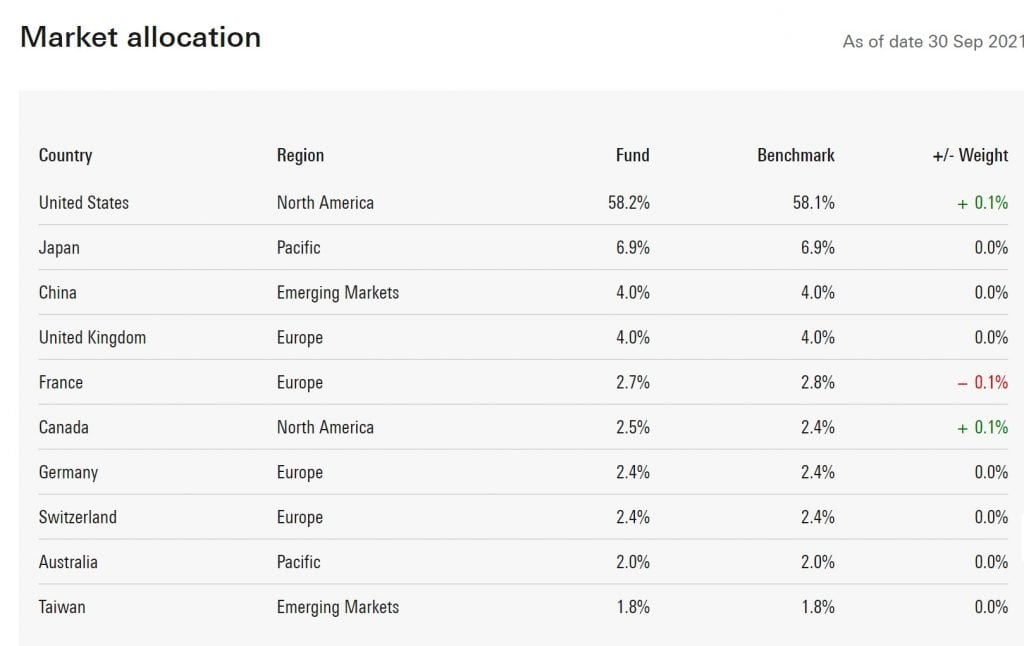
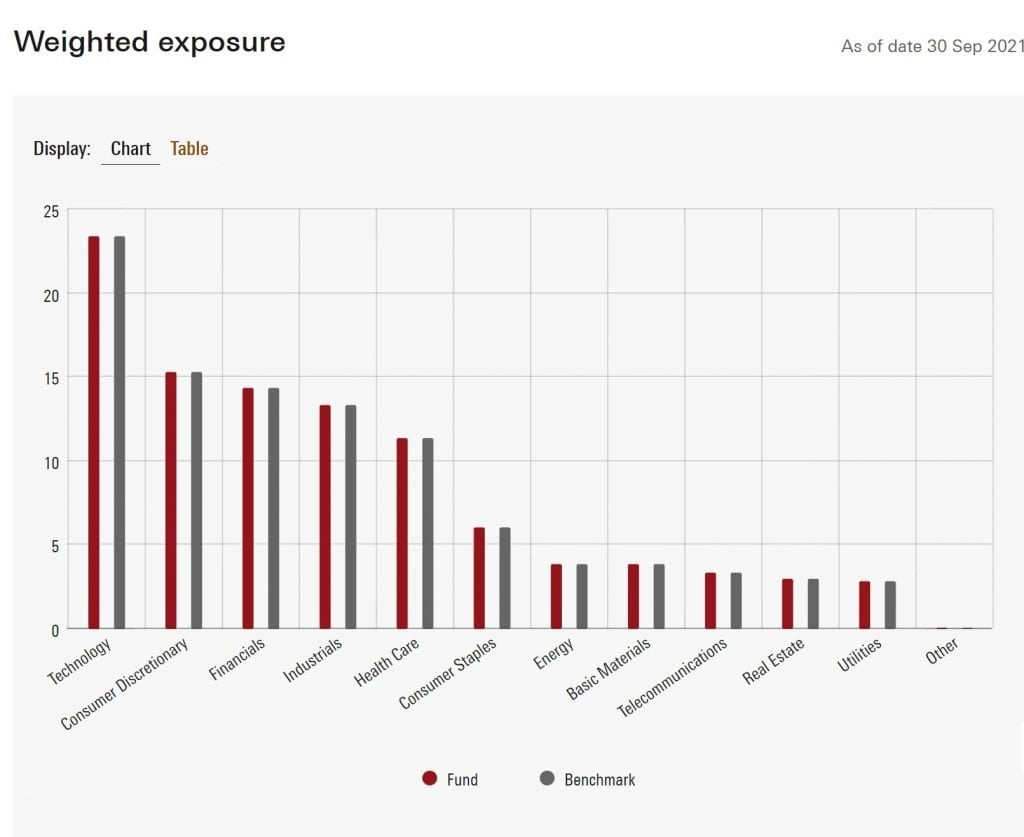
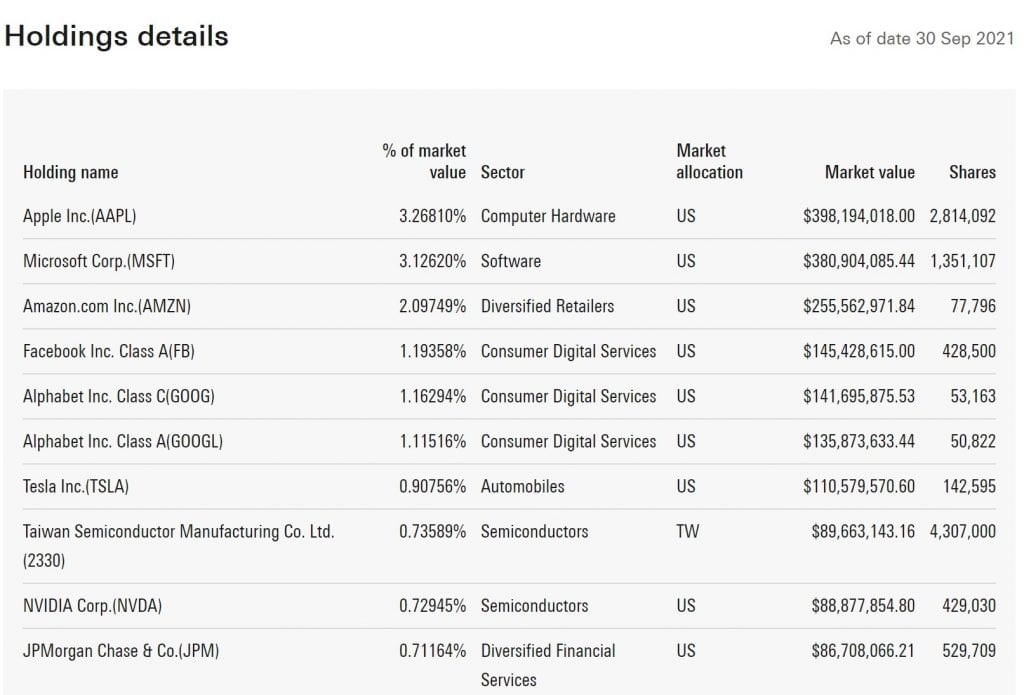

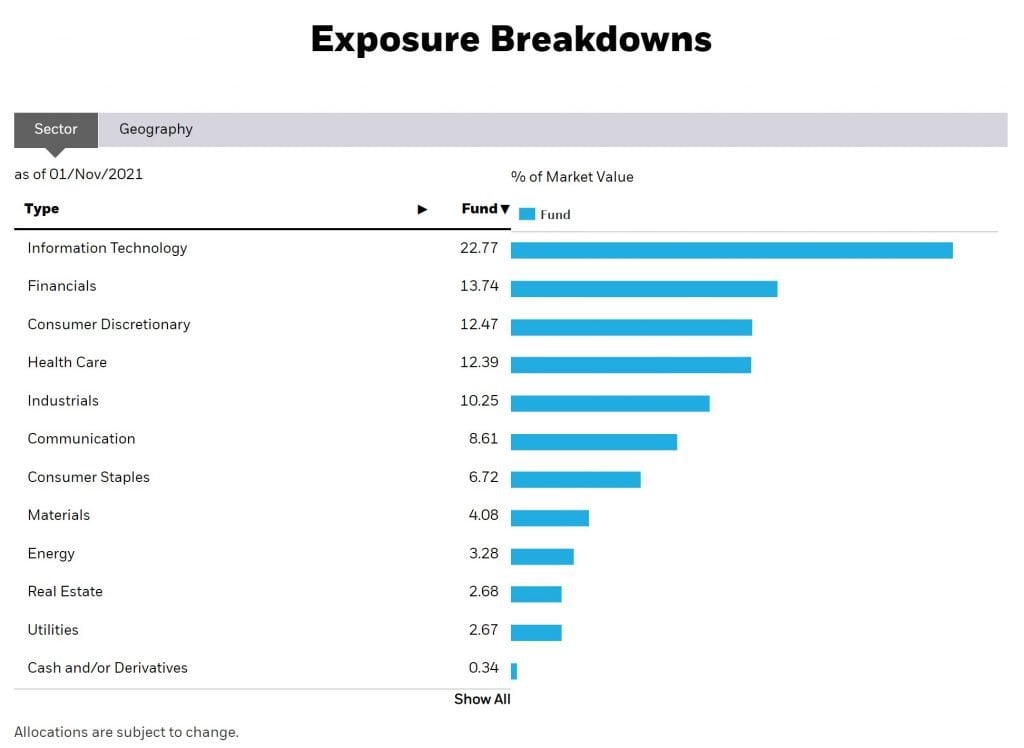
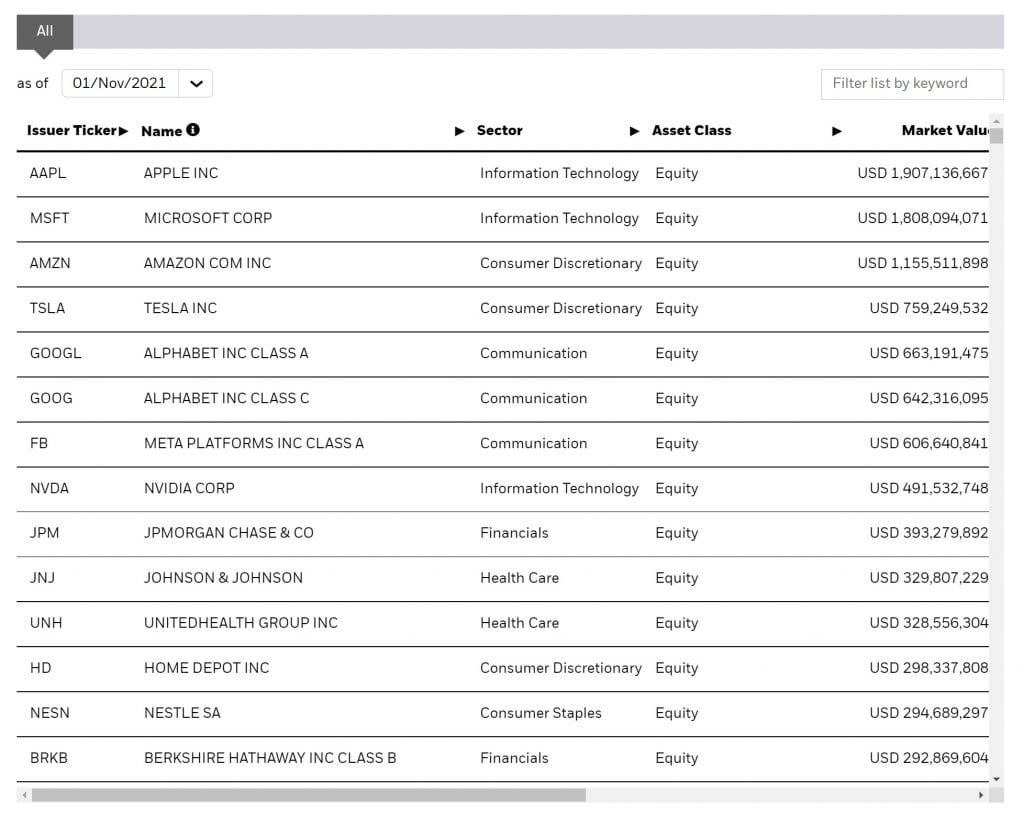
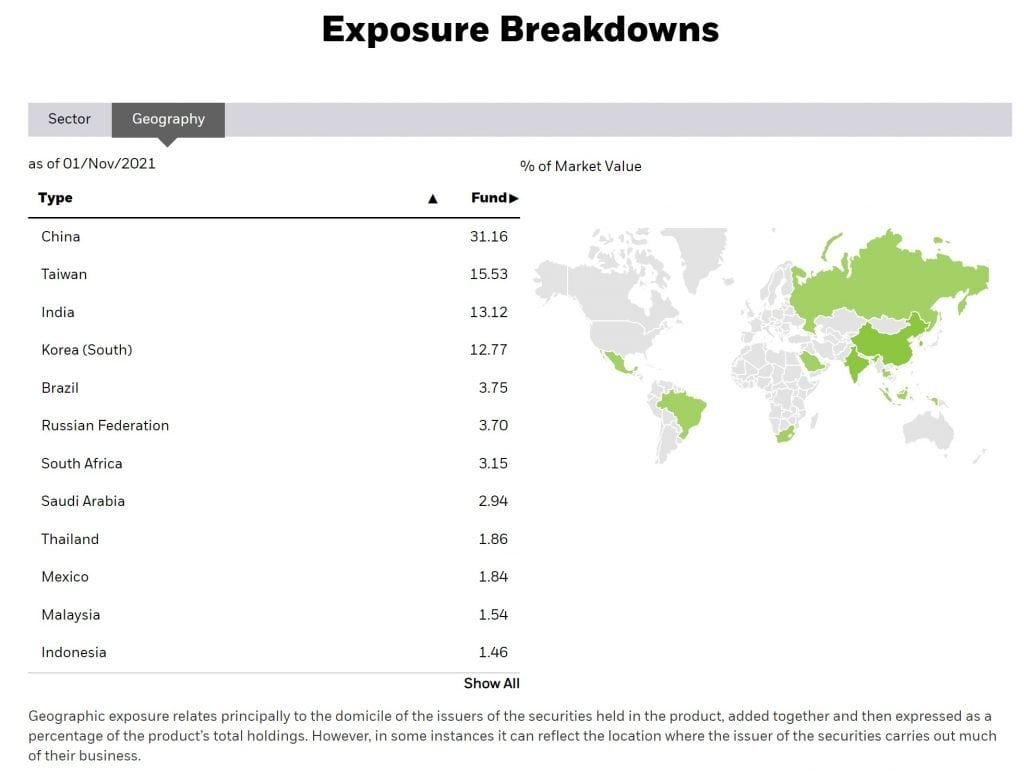
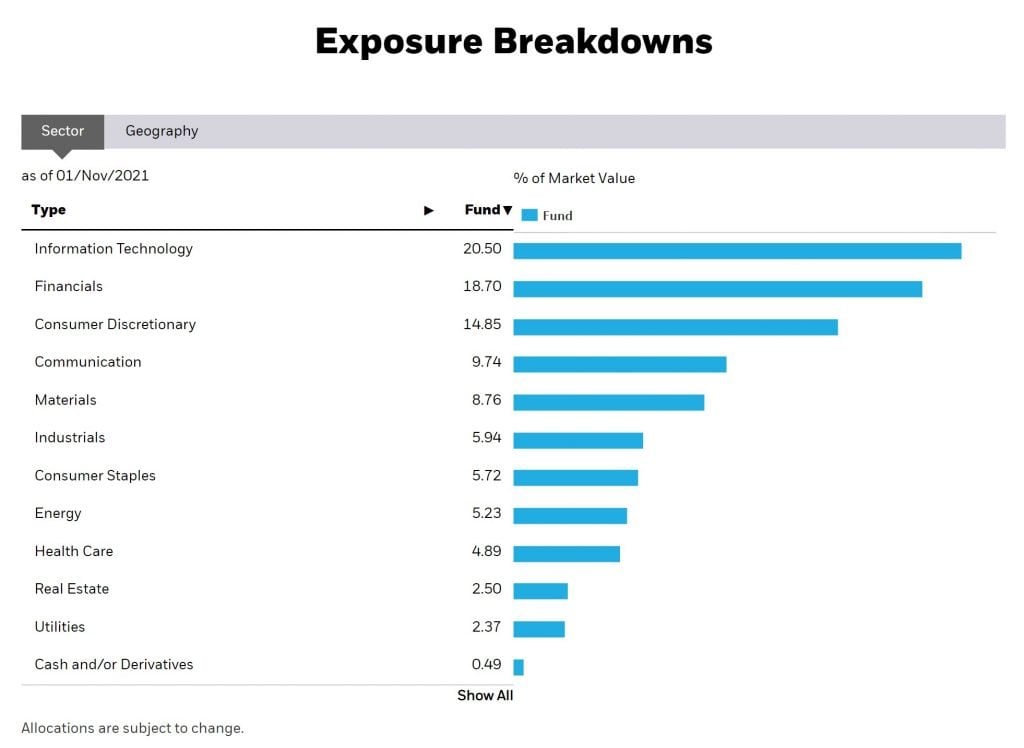
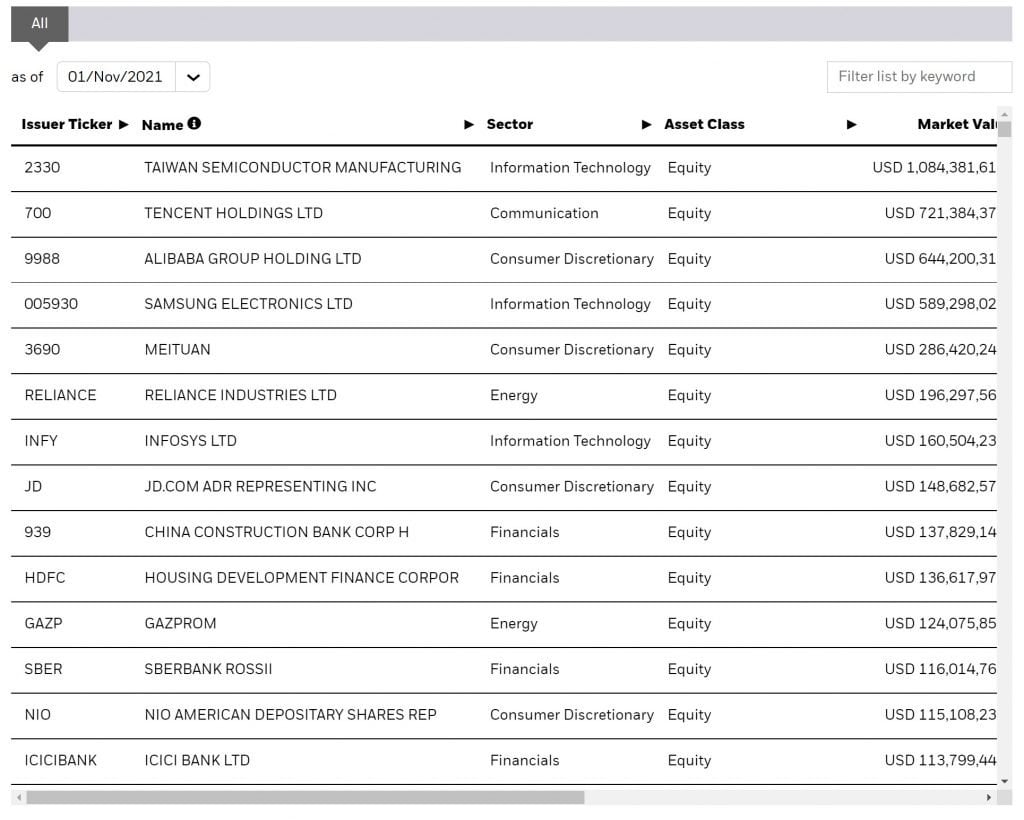


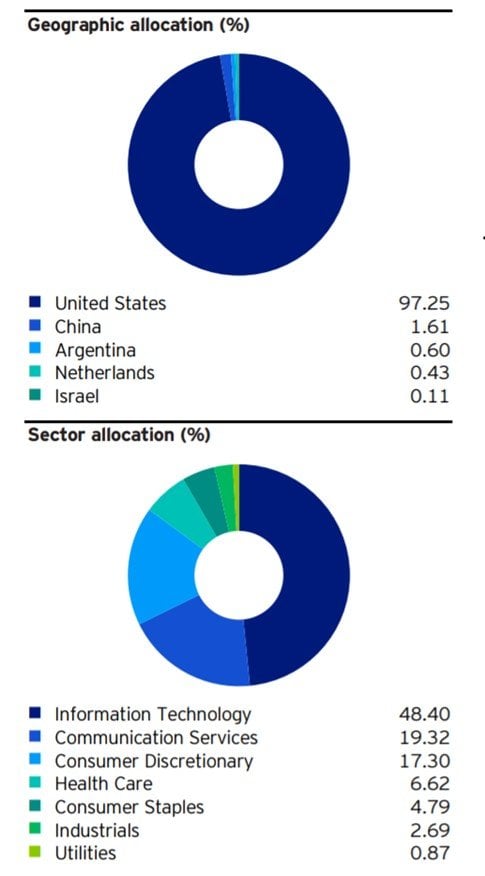

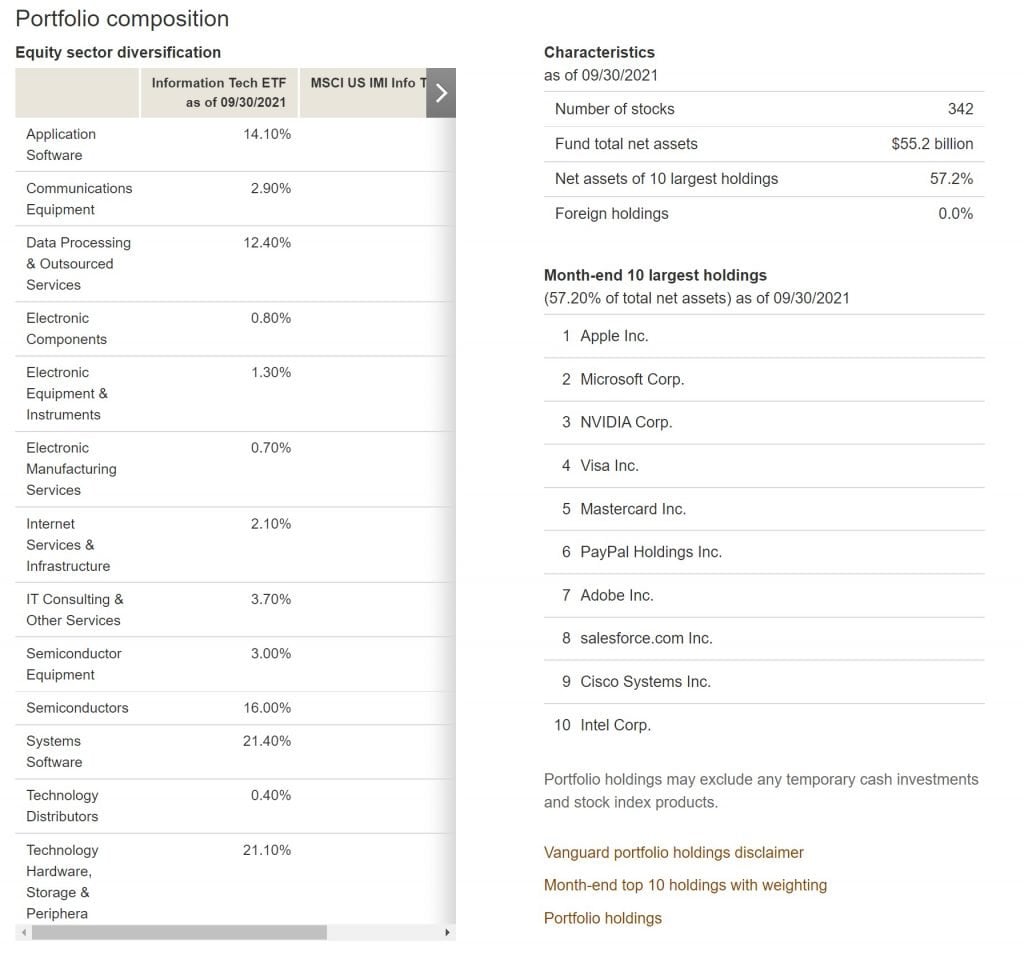
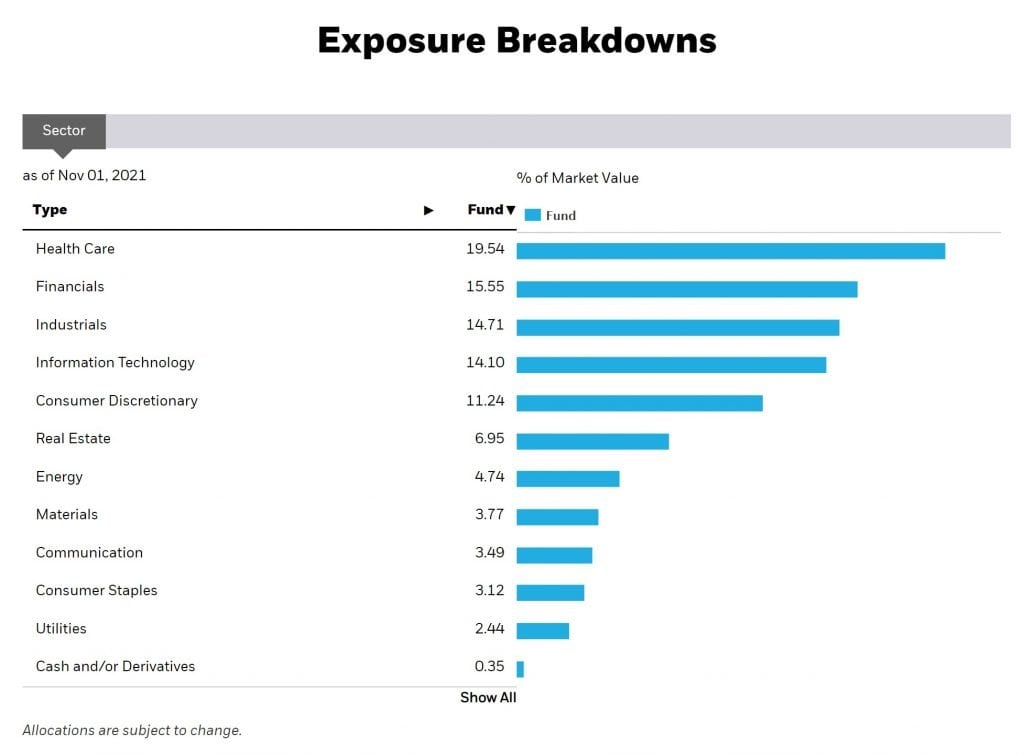
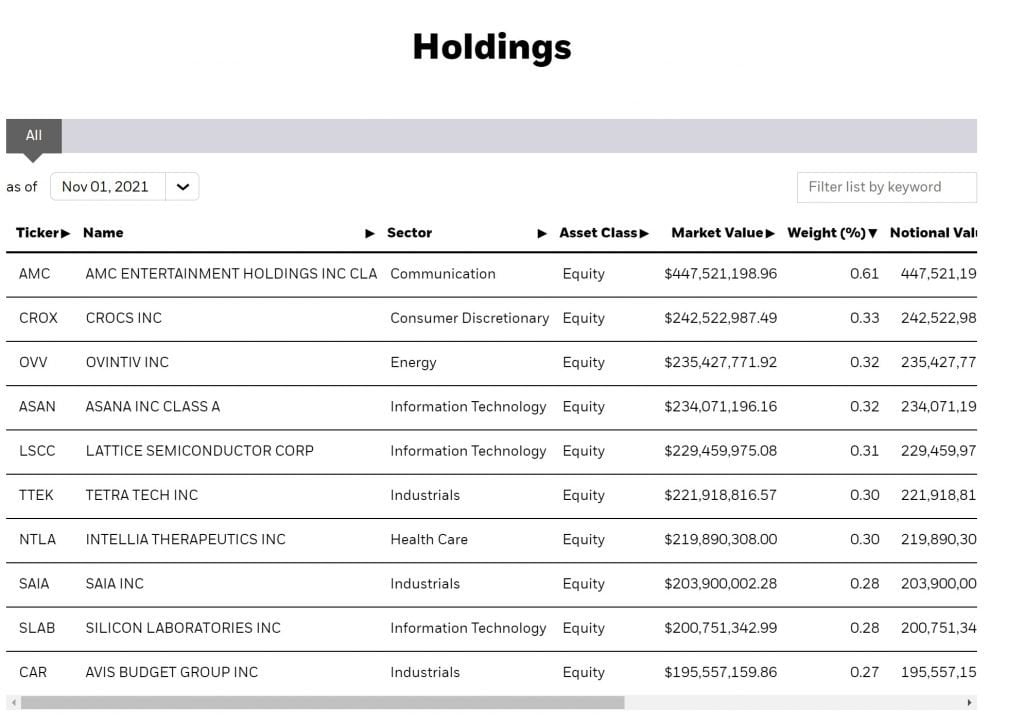








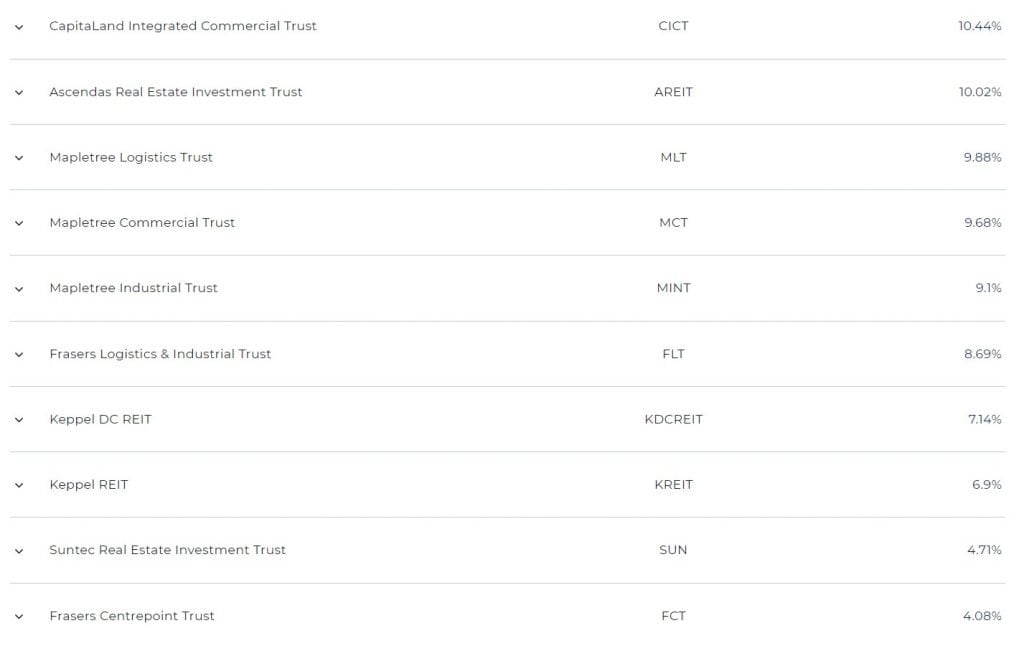
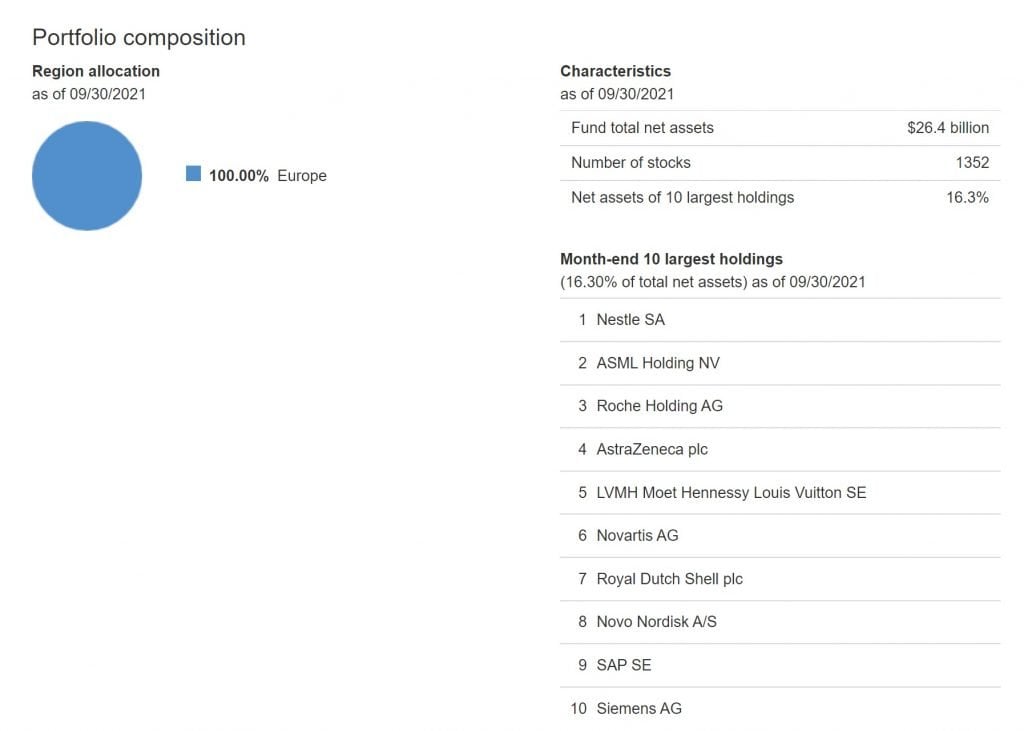



hi FH, I personally like BLOK, a good proxy to Bitcoin.
Oh yes good one – thanks for raising!